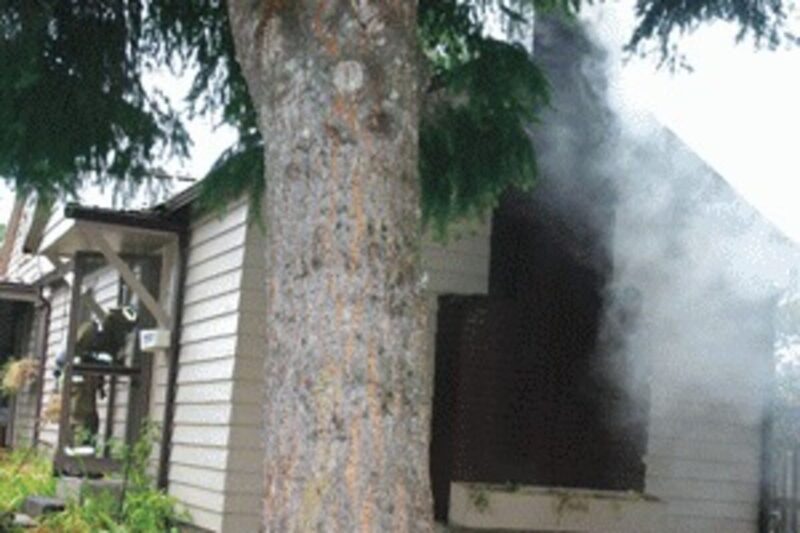Sean C. Morgan
Of The New Era
The unseasonable rain over the last 10 days has put a damper on the wildland fire season but that rain foreshadows another kind of fire season.
Last week, Sweet Home firefighters responded to a flue fire at 1040 23rd Ave., a home owned by Wander Mulholland and occupied by Anthony Gaudrund.
The tenant started a fire in wood stove prior to leaving for the day, Battalion Chief Doug Emmert said. The slow-burning fire caused creosote buildup in the flue to catch fire.
The fire spread a little into the structure of the home, but mostly it was contained to the chimney, Emmert said. It caused damage estimated at about $500.
“It’s going to be time for fires again,” Emmert said. “The big thing is to make sure your flue gets cleaned out before you start fires.”
When the cold season starts, people start firing up their stoves and fireplaces, he said.
When fires burn in stoves, it causes a buildup of creosote inside the chimney, Emmert said. It builds up faster from wet and unseasoned wood and when people choke down their stoves, letting the fires idle.
In those cases, combustion is incomplete, increasing the buildup, he said, and it happens in most homes.
Most homes cannot run their wood stoves at full all day, Emmert said. “If you leave it open, it’ll run you out of the home when it gets too hot.”
Once the creosote is built up, a fire can ignite it.
The paper used to start fires burns hotter than the wood, and it often ignites creosote buildup, Emmert said.
“The problem with flue fires is you never know when they’re going to start,” he said. They’ll start when kindling a new fire or while a fire is burning slowly.
Flue fires frequently start and then go out without anyone knowing about it, Emmert said. The danger comes when the fire escapes the flue.
“It can ignite the wood structure around it,” he said. In older homes, the wooden structure is built right up to the chimney brick, which was believed sufficient to prevent heat from escaping into the structure.
The bricks do heat up, and they heat up the wood. It may not start a fire for many years, but the heat makes the wood brittle and dries it out. Eventually it can catch fire and spread into attics and walls.
“Cleaning your flue regularly definitely cuts down on flue fires,” Emmert said. Sweet Home Fire and Ambulance District offers the use of chimney brushes free of charge. Persons borrowing them just have to sign them out.
“It helps to know the size of the flue and the shape (round or square),” Emmert said. The fire department has several sizes.
When cleaning a flue he suggests making sure everything knocked off the walls of the flue is cleaned out of the stove or fireplace.
He recommends cleaning flues before the cold season starts and then every few months depending on how often the chimney is used.
“If you use it all the time, you should clean it more often,” Emmert said.





